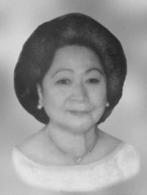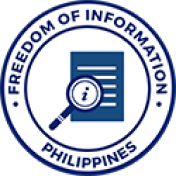
March 1996 – June 1998
Biography
Her 32 years of experience as a public health worker and government administrator could not have prepared her better for the difficult task of Secretary of Health during one of the most turbulent times in DOH’s history. Like Secretary R.A. Bengzon, her appointment was dealt by destiny coming unexpectedly at the wake of investigations of financial transactions, resignation and suspension of several top DOH officials. DOH’s public credibility and internal morale were at their lowest. Instinctively or perhaps, with shrewd calculation, the President made one of his wisest moves in history. Showing strong faith in the strength and power of a woman, President Ramos appointed Dr. Carmencita Noriega-Reodica as the first woman Secretary of Health in March 1996. In less than two years, Health Secretary Chit Reodica not only regained the stability within the DOH but also restored DOH to its top position in the public’s awareness and approval.
As an initial task, she streamlined the complicated and inefficient 13-committee procurement system. Unlike predecessors who have impressive solutions even before full understanding of the problem, Secretary Reodica carefully studies difficult situations like these through prudently created committees. Realizing the presence of loyalty factions within the bureaucracy, she initiated dialogues and DOH employee assemblies to maintain transparency and open communications. These reduced fears sown by rumors and unclear or inadequate information. With her non-confrontational but firm style, she avoided unnecessary conflict while maintaining dialogue and communication even with strongly dissenting groups. Unprovoked by a “macho” drive, she does not feel she has to answer every criticism of her administration. Coolly and confidently, she lets the wisdom that underlies her decisions and actions speak for itself a truly womanly way indeed!
How did Dr. Reodica make it to the top? Where did she begin her public health career?
Carmencita Noriega, born on 24 April 1938, graduated from the University of Santo Tomas College of Medicine in 1962. She started government service as a Resident Physician in Obstetrics and Gynecology at the Jose Fabella Memorial Hospital from 1963 to 1968. After residency training, she visited the United States, fell in love there, got married, and raised a son. She rejoined government in December 1974 as a Medical Specialist in the National Family Planning Office of the Ministry of Health. In April 1984, she took the post of Medical Adviser in the Office of Minister JC Azurin. Her native talent discovered, Dr. Reodica was designated coordinator of Minister Azurin’s key project on Primary Health Care. She became Acting Director of the Nutrition Service before the People Power Reorganization in 1986.
During the People Power Reorganization, she emerged as one of the few who passed Secretary Bengzon’s critical assessment. Her dedication and integrity was affirmed when she was appointed Assistant Secretary for Health Services in 1986. Her advice, especially on personal assessment was taken seriously by the Bengzon administration.
As Assistant Secretary she again handled critical programs and projects during the Bengzon administration. She organized and established the National Capital Regional Health Office and was coordinator of the Philippine National Drug Policy or Generics program. She was Chairperson of the DOH National Disaster Coordinating Committee.
In 1992, Dr. Reodica became the Assistant Secretary of the Office for Special Concerns that included, yet again, critical key programs in Maternal and Child health, Family Planning, Nutrition, STD/AIDS and Dental Health. She was the project Director of the Women’s Health and Safe Motherhood Project, the Integrated Family Planning and Maternal health Project, and the Family Planning and Reproductive Health Project. She also held other crucial assignments such as Chairperson on the National Commission on the Role of Filipino Women since 1995. She was President of the UP College of Public Health Alumni Society from 1989 to 1991.
What difference has she made as far as the first woman Secretary of Health?
As Secretary of Health, Secretary Reodica moved the DOH actively towards a people-based – in contrast to disease- or program-based – approach to public health. Keeping the “life-cycle” in mind, she focuses programs on specific target age and sectoral groups such as very young children, adolescents, and women. This approach more readily lends itself to integration of services from the point of view of the largest clients and not of the provider of services. Her ultimate vision: healthy and productive individuals and families. For the DOH, she continues the struggle towards making DOH a Center of Excellence.
During Secretary Reodica’s term, the following programs were initiated: Early Childhood Development ( a multi-agency collaboration with the Department of Social Welfare and Development and the Department of Education, Culture and Sports); the Adolescent Health program, the Measles Elimination Campaign, the Integrated Management of Childhood Illness (IMCI) and various approaches like the Lactational Amenorrhea Method (LAM), the syndromic approach to STD/AIDS, the quality assurance system for programs, and the life cycle planning approach.


